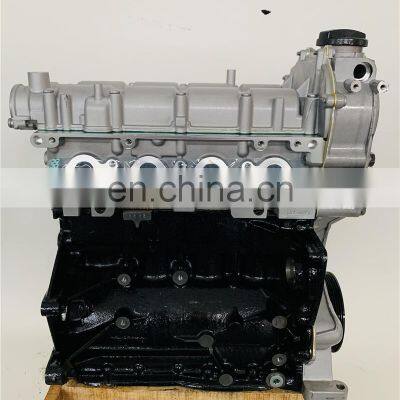Find a cost-effective clp engine for industrial applications.
Find a cost-effective clp engine for industrial applications.
Blog Article
How a Clp Engine Can Boost Efficiency in Numerous Industries
The development of CLP engines marks a substantial shift in functional effectiveness throughout different industries, driven by their capacity to enhance fuel intake and reduce downtime. Industries such as production and logistics stand to get considerably from their durable design and regular power outcome, which guarantee to streamline operations and boost efficiency. As companies increasingly focus on sustainability together with efficiency, the function of CLP engines comes to be a lot more critical. What stays to be seen is just how these improvements will form the future landscape of commercial procedures and their effect on more comprehensive economic patterns (clp engine).
Summary of CLP Engines
CLP engines, or Continuous Liquid Propellant engines, stand for a considerable innovation in propulsion modern technology, especially for space applications. These engines make use of a continual feed system that enables for the sustained expulsion of propellant, leading to enhanced performance and performance compared to typical strong or hybrid propulsion systems. By preserving a constant circulation of liquid propellant, CLP engines can achieve extra exact thrust control, which is crucial for steering spacecraft in different mission circumstances.
The design of CLP engines incorporates sophisticated materials and ingenious fuel monitoring systems. clp engine. This leads to reduced weight and boosted reliability, crucial aspects for long-duration space objectives. Additionally, the continual operation decreases the danger of burning instability, a typical challenge in traditional rocket engines.

Benefits in Manufacturing
The manufacturing of Continuous Liquid Propellant (CLP) engines offers numerous remarkable benefits that improve both effectiveness and cost-effectiveness. One of the primary advantages is the structured manufacturing process, which reduces the intricacy linked with standard propulsion systems. By using liquid propellant, manufacturers can achieve better accuracy in engine performance, resulting in optimized power result and minimized waste.
Furthermore, CLP engines help with a higher level of modularity, enabling simpler assimilation right into different manufacturing lines. This flexibility can dramatically reduce lead times and boost general operational adaptability. Making use of CLP technology additionally has a tendency to minimize the demand for substantial maintenance as a result of less moving parts, which translates into reduced downtime and operational prices.

Applications in Logistics
Leveraging Constant Liquid Propellant (CLP) engines in logistics offers significant advantages in operational efficiency and reliability. These engines provide a robust solution for various transport demands, making it possible for the smooth activity of products across large distances. The fundamental design of CLP engines allows for regular power result, which equates into smoother and a lot more predictable transportation schedules.
Among the vital applications of CLP engines in logistics remains in durable freight transport, where they can drive both ground and airborne automobiles. Their capability to preserve high performance under differing lots conditions guarantees that delivery timelines are met, therefore boosting client complete satisfaction. Furthermore, CLP engines can be integrated right into automated logistics systems, assisting in real-time tracking and optimizing course preparation.
Furthermore, the sturdiness of CLP engines decreases maintenance downtime, allowing logistics companies to optimize their operational capacities. This is specifically helpful in warehousing operations, check my site where performance in managing and carrying goods is crucial. As logistics continues to evolve, the assimilation of CLP engines represents a forward-thinking technique that not only boosts performance yet also sustains the industry's growing needs for dependability and rate.
Influence On Power Efficiency
Exactly How do Continual Liquid Propellant (CLP) engines improve power efficiency in transport? CLP engines make use of a consistent circulation of fluid fuel, enhancing combustion procedures and keeping a stable drive result. This design lessens power losses related to typical combustion engines, where fuel shipment can differ and lead to ineffectiveness.
The continual operation of CLP engines allows for a much more reliable thermal cycle, causing greater specific impulse compared to traditional engines. clp engine. This converts to reduced fuel intake for the exact same quantity of work done, significantly lowering operational expenses across different transport sectors, including aeronautics and maritime sectors
Moreover, the capacity of CLP engines to maintain ideal efficiency under varying load conditions decreases the requirement for regular acceleration and deceleration, additionally improving gas effectiveness. Enhanced energy effectiveness not only contributes to cost savings but additionally brings about lower greenhouse gas emissions, aligning with global sustainability objectives.
Future Trends and Innovations
Arising innovations in Continual Liquid Propellant (CLP) engine innovation guarantee to revolutionize the landscape of transportation performance and sustainability. As sectors pivot towards greener options, CLP engines stand at the forefront, incorporating cutting-edge materials and design methodologies that boost efficiency while lessening environmental influence.
Among the most promising fads is the fostering of hybrid systems that incorporate CLP engines with eco-friendly energy sources. This harmony can enhance gas usage and decrease emissions, straightening with worldwide sustainability goals. Innovations in computational fluid characteristics (CFD) are assisting in the design of even more aerodynamically efficient engines, leading to lowered drag and improved gas efficiency.
In addition, the advancement of clever tracking systems is readied to enhance functional efficiencies. These systems utilize data analytics and IoT innovation to optimize engine efficiency in real-time, ensuring that the engines operate within their most reliable parameters.
As research study remains to explore alternate propellant solutions-- such as biofuels and synthetic gas-- the future of CLP engines looks encouraging. By utilizing these advancements, industries can not only enhance their performance but likewise add significantly to a cleaner, a lot more lasting future in transportation.
Final Thought
Finally, CLP engines stand for a significant improvement in performance throughout multiple markets. Their capability to maximize gas consumption and decrease operational expenses, integrated with a continual feed system, boosts power output and operational dependability. The combination of innovative products and less this page relocating components decreases upkeep needs, while alignment with sustainability goals positions CLP engines as a pivotal technology for the future. Continued development in this field promises further improvements in efficiency and environmental performance.
Report this page